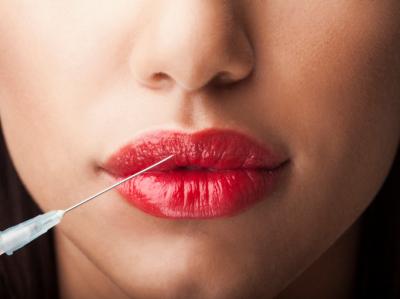Studies find about 7% or so of people are afraid of needles. While that pales in comparison to the percentage of people afraid of public speaking (74%), death (68%), spiders (31%), darkness (11%) and heights (10%), good news is at hand for the needle sufferers. That's because research by Northwestern University finds sensor stickers and wireless technology that use sweat may soon take the place of poking needles in arms for blood tests. This medical advancement reminds us of another called "selfie banking".
Selfies are no longer just for teens and vacationing families, but are for bank authentication too. At the end of last year, Spanish bank BBVA started selfie authentication. This is because BBVA knows their customers' time is valuable and they do everything with their cell phones, according to Cristina de Parias, the head of the bank in Spain.
Naturally, BBVA executives hope to attract millennial customers and gain an edge on fraudsters who too easily crack passwords. BBVA says the new process takes just a few minutes once the customer downloads the app. Then, they just need to upload a photo ID, such as a passport or a driver's license and then take a selfie. The bank, with the help of a recognition program, will verify that both images belong to the same person. With those steps, the registration process is almost done. The final step is that a BBVA employee confirms the customer's identity through a video call. Interesting, no?
Selfie authentication seems simple, quick and secure. BBVA is the first bank in Spain to adopt this kind of biometrics for opening accounts but, it is not the only one in the world. In fact, the Federal Bank of India has been utilizing a selfie process for over a year. Customers are required to download an app from the Google play store, scan two cards and then take a selfie. A confirmation SMS is then sent from the bank's call center and the account is activated.
In yet another example, as of Oct of last year, HSBC's business customers may open an account with a selfie and a passport photo. For busy bank customers, they no longer need to visit a local branch to complete the process.
These early industry adopters find the selfie useful in more ways than simply authenticating an account owner. Bank of Montreal, for example, is testing a program with MasterCard to settle online purchases. The customers are asked to download a new mobile app, and then they snap a selfie to validate their identity. They could also scan their fingerprints. Either way, this new method is part of fraud prevention.
MasterCard technologists believe so much in its efficiency, that they are testing selfies in Canada, the US and Holland. They say that the new tool will be widely available this year in 12 EU countries. Consumers from Germany, Great Britain and Spain will soon pay their online purchases with selfies.
If the selfie isn't your thing, other biometric tools in rollout across the industry include: iris scans, voice recognition and, even the customer's heartbeat.
Bankers are moving quickly to address customer fears about online channels as they seek to keep the bad actors out. As these options roll out, some will be afraid, while others worry and sweat about where the next sharp poke could come from related to their bank account and its safety.


